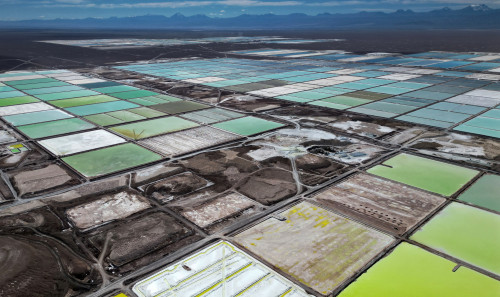By Daina Beth Solomon and Fabian Cambero
SANTIAGO (Reuters) – Chile’s total lithium resources are 28% greater than previously estimated, according to new studies of salt flats in the northern Antofagasta region that show a higher amount of the battery metal, state mining body ENAMI said on Monday.
A new analysis shows that the La Isla salt flat holds 2.13 million metric tons of lithium, up 150% from a prior estimate, while the Aguilar salt flat holds just under 1 million tons of lithium, an increase of 40%, according to ENAMI.
Together, ENAMI said, they add 3.05 million tons of lithium to Chile’s total resources, which the U.S. Geological Survey had previously estimated at 11 million tons.
Resources refer to the size of a mineral deposit, while reserves refer to the amount that can be realistically and economically mined.
According to USGS, Chile is the world’s third-largest holder of lithium resources, after Bolivia and Argentina, but is the No. 1 holder of lithium reserves, with 9.3 million tons.
Chile is also the second-largest lithium producer globally, with its Atacama salt flat providing output for state-run miner SQM and U.S.-based Albemarle.
In May, ENAMI is set to choose a partner to jointly mine the two salt flats studied as part of the Salares Altoandinos project, which marks one of the state’s first ventures into lithium production.
ENAMI has received proposals from Chinese carmaker BYD as well as miners Eramet, Posco and Rio Tinto. CNGR Advanced Material Co and LG Energy are vying to provide financing.
The fresh data on resources is based on analysis from external consultants that use ENAMI’s exploration numbers.
“This confirms that Salares Altoandinos is a world-class project,” said ENAMI head Ivan Mlynarz.
(Reporting by Daina Beth Solomon and Fabian Cambero; Editing by Bill Berkrot)



